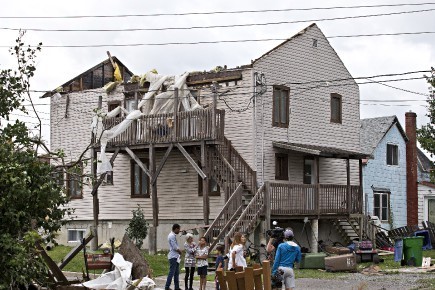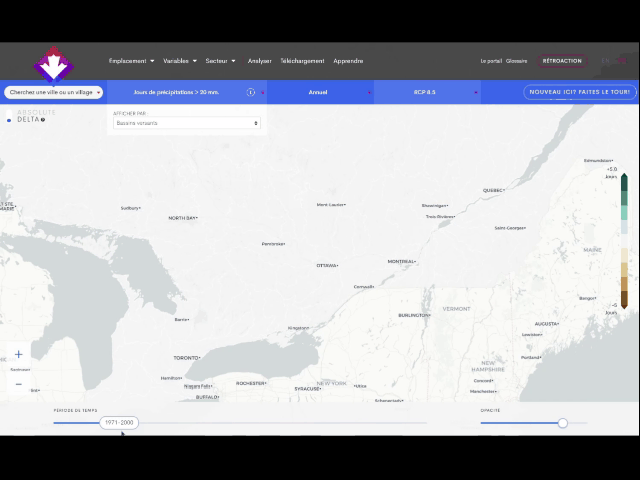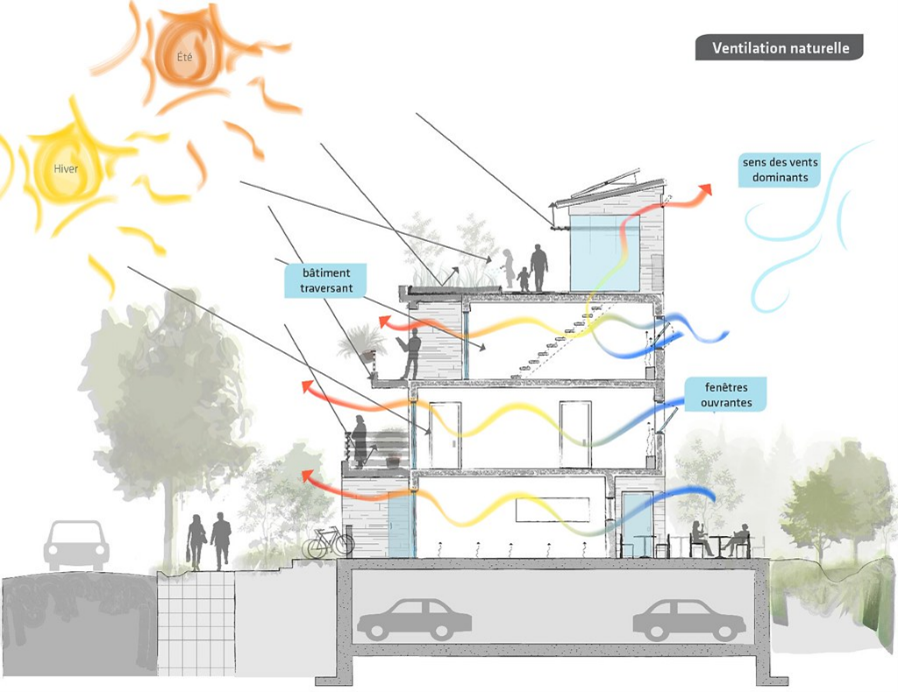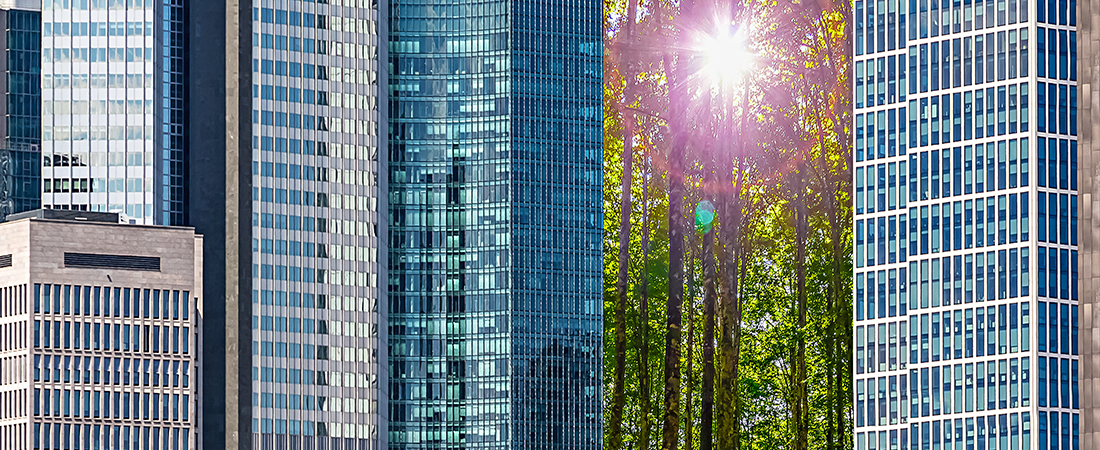 Building Code Challenges and Natural Disasters
Building Code Challenges and Natural Disasters
Citizens and farmers are not the only ones concerned with climate change, construction professionals are as well. They worry about the vulnerability of infrastructure in the face of a changing climate.

Tornado in Lachute, Summer of 2017. Credit: La Presse
According to a report [1] by Ouranos on climate change in Québec, the frequency of convective precipitation such as severe thunderstorms is expected to climb. “These storms would produce larger quantities of precipitations. Such convective processes drive extreme weather events with a high potential for damage.”
Although there is no scientific evidence of causality between climate change and the emergence of tornadoes, “there are several indications that their number may increase in the coming years. And climate change could be responsible for this, [2]” says Alain Bourque, Executive Director of Ouranos, a research consortium specializing in adaptation to climate change. In fact, climate change fosters the ingredients that lead to tornado potential, notably warm and humid air, instability or wind shear. Moreover, tornado damage has doubled every five to seven years since the 1960s, which is a concern for building and environmental professionals.
A second important climatic event is flooding: according to a study prepared by the Intergovernmental Panel on Climate Change (IPCC), climate change would have a visible influence on variables such as rainfall and snowmelt that contribute to flooding.
Particularly in Québec, “climate models agree on increased precipitations in winter and spring”. Rain falling on snow is to become more frequent, which would result in an accumulation of water on still-frozen ground. The negative impact of this occurrence is that the ground will be less able to absorb these new quantities of water.
A third climatic event, equally impactful, is drought. Highlighted in the previous ClimateData.ca capsule on agriculture, “projections of soil moisture anomalies show that at least 66% of available CMIP [3] simulations call for drier conditions annually, and even more so over the 2081-2100 horizon.” Drought impacts infrastructure as well, as it contributes to the soil drying up. Regarding clay soils, the impact on building foundations can be significant.
For the Québec Building Code [4] to promote carbon neutrality and climate resilience, it must not only consider historical climate data, but also data that takes into account future climatic states.

Climate projections to help building professionals
The ClimateData.ca portal presents future climate projections. This data is essential to estimate the frequency and intensity of extreme events and thus help planners and other construction professionals to better design, build and maintain a built environment that is resilient to the current and future climate.
As an example, let’s take the scenario of heavy precipitation (greater than 20 mm per day) for the Québec region. ClimateData.ca allows us to see a significant difference between historical data for the period 1971-2000 and projected data for 30-year periods (2001-2030; 2031-2060; … 2071-2100).
From 2001 to 2030, a very small increase in very wet days (20 mm accumulation) is projected. Over time, the models predict greater accumulation: for the 2071-2100 period, an increase from 3.9 to 5 days of heavy rainfall is projected, as shown in Figure 1.

Figure 1: Projected daily increase in accumulation 20 mm and greater, Québec (2001-2100)
Thanks to ClimateData.ca and its visualization tool, professionals from the construction sector – architects, engineers, contractors, project managers, builders, real estate developers, etc. – are better able to analyze risks and define adaptation strategies for new construction sites or existing buildings.
- In regions where heavy rainfall is expected, the builder may choose moisture-resistant materials, or the developer may broaden the search to include areas with lower clay levels.
- In other climate scenarios, such as extreme heat, using the “cooling degree days ” variable, helps in assessing future needs for thermal management, and defining actions at an earlier stage, for both new construction or renovations. Several strategies could then be implemented: better insulation, better natural and mechanical ventilation, a geothermal system, etc.
A “Building” module will soon be available on ClimateData.ca that will provide professionals with easy access to relevant data to guide them in the design, location, choice of materials, operations, etc.
With ClimateData.ca, the building community will be better equipped to identify possible solutions to adapt to climate change. Case studies to be released in the Building module highlight the following recommendations:
- Adjusting design and construction criteria to the new climate reality;
- Revising codes and standards so that climate change is taken into account in all stages of a building or infrastructure life cycle;
- Adapting building standards and even exceeding minimum expectations, as certain British Columbia companies are through the voluntary BC Energy Step regulation;
- Using prescribed material;
- Increasing maintenance and managing assets in a climate change sensitive manner.
Residential buildings have a key role to play in climate change adaptation. In some regions of Québec, builders are encouraged to take into account the climatic conditions and characteristics of the land in order to build or renovate comfortable, energy-efficient homes.

Source: Construireavecleclimat.org
This method holds many advantages:
- New and renovated buildings are better insulated and generate less greenhouse gases emissions
- People live and breathe better, reducing climate-related illness and death
- Society becomes part of a global movement to adapt to climate change and accelerates the sharing of best practices
ClimateData.ca is a simple, user-friendly tool that provides a glimpse into the future, generating climate projections up to year 2100. By anticipating the future impacts of climate change more accurately, professionals of the building industry and other sectors will be able to make the best decisions in the name of public health.


 Building Code Challenges and Natural Disasters
Building Code Challenges and Natural Disasters


























